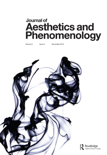
Journal of Aesthetics and Phenomenology
Scope & Guideline
Unveiling the Nuances of Human Perception
Introduction
Aims and Scopes
- Phenomenological Aesthetics:
The journal emphasizes the application of phenomenological methods to aesthetic inquiry, examining how consciousness interacts with artistic experiences and the nature of aesthetic value. - Interdisciplinary Approaches:
It encourages interdisciplinary research that bridges philosophy, art theory, psychology, and cultural studies, providing a comprehensive understanding of aesthetics in contemporary contexts. - Historical Contextualization:
The journal often contextualizes aesthetic theories within historical frameworks, analyzing the contributions of early phenomenologists and their relevance to modern aesthetics. - Art and Technology:
A significant focus is on the relationship between art and technology, exploring how digital mediums and artificial intelligence impact aesthetic experiences and artistic creation. - Emotional and Affective Dimensions:
The journal explores the emotional and affective dimensions of aesthetic experiences, investigating how feelings and empathy shape our appreciation and understanding of art.
Trending and Emerging
- AI and Aesthetics:
There is an increasing body of work examining the aesthetics of artificial intelligence and its implications for creativity and artistic expression, highlighting the role of technology in shaping future artistic practices. - Empathy and Aesthetic Experience:
Recent papers emphasize the role of empathy in aesthetic experiences, suggesting a growing interest in how emotional engagement influences our understanding and appreciation of art. - Urban and Environmental Aesthetics:
The journal is witnessing a trend towards exploring the aesthetics of urban environments and ecological issues, indicating a shift towards examining how place and space influence aesthetic perception. - Dialogical and Participatory Aesthetics:
Emerging discussions focus on the relational aspects of aesthetics, including how dialogue and participation shape artistic practices and experiences, aligning with contemporary movements in participatory art. - Cultural and Political Dimensions of Aesthetics:
There is a notable increase in publications addressing the cultural and political dimensions of art, exploring how aesthetics can engage with social issues and contribute to critical discourse.
Declining or Waning
- Traditional Aesthetic Theories:
There appears to be a waning interest in traditional aesthetic theories that do not incorporate phenomenological perspectives, as contemporary discussions increasingly favor innovative and interdisciplinary approaches. - Existentialism in Aesthetics:
Themes rooted in existentialist interpretations of art and aesthetics have diminished, possibly as scholars move towards more phenomenological and relational frameworks that emphasize experience over individual existence. - Static Representations of Art:
The exploration of static or purely representational art forms is less prevalent, with a shift towards dynamic and interactive art forms that engage with technology and audience participation.
Similar Journals

Phenomenology & Practice
Unlocking the Essence of Lived ExperiencePhenomenology & Practice is an esteemed open-access journal published by the University of Alberta Libraries that has been disseminating scholarly work in the field of phenomenology since 2007. With its ISSN 1913-4711, the journal serves as a vital resource for researchers, practitioners, and students interested in the diverse applications of phenomenological research across disciplines such as psychology, education, and social sciences. By facilitating the free exchange of ideas and findings, Phenomenology & Practice not only supports the academic community in understanding and interpreting lived experiences but also enhances interdisciplinary dialogue and collaboration. The journal's commitment to accessibility and scholarly rigor underscores its role as a leading voice in phenomenological studies, making it an essential platform for those seeking to contribute to this rich field of inquiry.

ESPES-The Slovak Journal of Aesthetics
Cultivating Critical Discussions in AestheticsESPES-The Slovak Journal of Aesthetics, published by UNIV PRESOV, FAC ARTS, serves as a prominent platform for scholarly inquiry in the field of aesthetics and the arts. Since its inception in 2012, the journal has embraced an Open Access model, facilitating a wider dissemination of knowledge and fostering global collaboration among researchers, professionals, and students alike. Notably, ESPES has achieved significant standing within its discipline, represented by its quartile placements in 2023, including Q3 in Literature and Literary Theory and various Q4 rankings across fields such as Philosophy, Visual Arts, and Music. While the H-Index data is currently unspecified, the journal's efforts to include thematic diversity and academic rigor are underscored by its rankings in Scopus, positioning it as a valuable resource for those interested in the interplay between aesthetics and cultural expression. The journal is committed to exploring novel perspectives and fostering critical discussions, thereby enhancing the understanding of aesthetic theories and practices in a contemporary context.
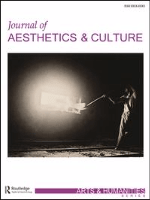
Journal of Aesthetics & Culture
Connecting Aesthetics with Contemporary IssuesJournal of Aesthetics & Culture, published by TAYLOR & FRANCIS LTD, is a prestigious Open Access journal that has been serving the academic community since its inception in 2009. Based in the United Kingdom, this journal aims to explore, document, and critically engage with themes in Cultural Studies, Philosophy, and the Visual and Performing Arts. Notable for its impact, the journal holds a Q3 ranking in Cultural Studies and Philosophy, and a Q2 ranking in Visual Arts and Performing Arts as of 2023. With its Scopus rankings placing it within the top 17% of Visual Arts and Performing Arts journals and top 31% in Philosophy, it stands as a vital resource for researchers and practitioners alike. Covering a broad range of contemporary issues and inviting innovative perspectives, the Journal of Aesthetics & Culture plays a crucial role in shaping critical discourse within its fields and fostering an understanding of the intricate interplay between aesthetics and societal contexts.

Horizon-Fenomenologicheskie Issledovaniya
Advancing Knowledge Across DisciplinesHorizon-Fenomenologicheskie Issledovaniya, published by ST PETERSBURG UNIV PRESS, is an esteemed open-access journal that has been contributing to interdisciplinary discourse since its inception in 2012. With ISSN 2226-5260 and E-ISSN 2311-6986, the journal serves a diverse array of fields, prominently featuring areas such as Artificial Intelligence, Control and Optimization, and Philosophy, as indicated by its recent quartile rankings across multiple categories in 2023. The journal's commitment to accessibility, having adopted an open-access model since 2014, ensures that its scholarly articles are freely available, fostering knowledge dissemination and collaborative research among students, professionals, and academics alike. Based in the Russian Federation, the journal not only enhances local academic inquiry but also engages with a global audience, thus contributing to the broader philosophical and scientific landscapes. Through its rigorous editorial standards, Horizon-Fenomenologicheskie Issledovaniya remains a vital platform for cutting-edge research and thought leadership in the realms of both philosophy and applied sciences.

Lebenswelt-Aesthetics and Philosophy of Experience
Unveiling the Interplay Between Lived Experience and Aesthetic InsightLebenswelt-Aesthetics and Philosophy of Experience is a distinguished academic journal published by Milano University Press, located in the heart of Italy. With a commitment to fostering open access dissemination of knowledge since 2011, this journal serves as a vital platform for scholars and students in the fields of aesthetics and philosophy, facilitating innovative discussions and research pertaining to human experience. The journal aims to explore the intricate relationships between lived experience and aesthetic theory, making significant contributions to contemporary philosophical discourse. Although it currently holds a Q4 ranking within the philosophy category of Scopus, its open access format and focus on interdisciplinary connections are invaluable for researchers seeking to engage with cutting-edge ideas. As it converges on themes of practical relevance and philosophical inquiry, Lebenswelt-Aesthetics and Philosophy of Experience invites contributions that enrich our understanding of the complexities of human perception and aesthetic appreciation.

RESEARCH IN PHENOMENOLOGY
Connecting Theory and Experience in PhilosophyRESEARCH IN PHENOMENOLOGY, published by BRILL, stands as a vital academic journal dedicated to the exploration of phenomenological research within the realm of Philosophy. With an ISSN of 0085-5553 and an E-ISSN of 1569-1640, this journal has been a respected platform since its inception, reflecting a rich history spanning from 1971 to the present. Despite not currently offering open access, it provides invaluable insights and scholarly articles that contribute significantly to the understanding of phenomenology and related disciplines. The journal holds a prestigious Q3 ranking in the 2023 category of Philosophy, with a Scopus ranking of 409 out of 806 in Arts and Humanities, indicating a solid standing in academic discourse. Academics, researchers, and students alike are encouraged to engage with the cutting-edge studies published in this journal, which serves as an essential resource for advancing phenomenological thought and fostering interdisciplinary dialogue.

REVUE PHILOSOPHIQUE DE LA FRANCE ET DE L ETRANGER
Exploring the Depths of Philosophical DiscourseREVUE PHILOSOPHIQUE DE LA FRANCE ET DE L'ETRANGER is a distinguished academic journal published by PRESSES UNIV FRANCE, focusing primarily on the field of philosophy. Established in 1949 and continuing its legacy into 2023, this journal serves as a vital platform for scholarly dialogue and exploration of philosophical ideas that transcend national boundaries. While it currently holds a Q4 ranking in the philosophy category according to the latest Scopus assessments, its contributions remain significant in fostering a comprehensive understanding of various philosophical discourses. Based in France, at 6 AVENUE REILLE, 75685 PARIS CEDEX 14, this journal provides an essential resource for researchers, professionals, and students alike, despite not being an open-access publication. Each issue encourages a deeper engagement with contemporary philosophical thought while contributing to the academic community's ongoing discussions on fundamental philosophical questions.
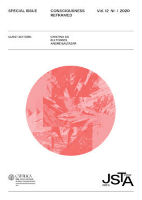
Journal of Science and Technology of the Arts
Fostering Collaborative Insights Across Disciplines.The Journal of Science and Technology of the Arts, published by UNIV CATOLICA PORTUGUESA, is a pioneering open access journal dedicated to the interrelation of the arts and scientific advancements. Since its inception in 2009, it has served as a critical platform for disseminating innovative research across various disciplines, including Visual Arts, Performing Arts, Music, and Conservation. With its ISSN 1646-9798 and E-ISSN 2183-0088, the journal operates from Portugal, attracting a diverse international audience. Although it is currently ranked in Q4 for Arts and Humanities (miscellaneous) and Computer Science Applications, it has achieved notable Q3 rankings in Conservation, Music, and Visual Arts and Performing Arts as of 2023. The journal's impact is reflected in its Scopus rankings, which place it in the midst of its peers, showcasing its growing influence. Through its commitment to fostering interdisciplinary dialogue, the Journal of Science and Technology of the Arts is essential for researchers, professionals, and students interested in the innovative integration of arts and technology.
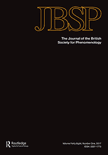
JOURNAL OF THE BRITISH SOCIETY FOR PHENOMENOLOGY
Exploring the Depths of Human Experience.JOURNAL OF THE BRITISH SOCIETY FOR PHENOMENOLOGY, published by JACKSON PUBLISHING & DISTRIBUTION, is a prestigious academic journal dedicated to the exploration and advancement of phenomenological philosophy. With an impressive 2023 Q1 ranking in the Philosophy category and a Scopus rank of #153/806 in the Arts and Humanities, this journal is a cornerstone for scholars seeking to delve into various facets of phenomenology, bridging theoretical insights with practical applications. Established in 1970, the journal encompasses a broad scope, highlighting both historical and contemporary perspectives within the field. Its commitment to intellectual rigor and engagement with phenomenological themes makes it an invaluable resource for researchers, students, and professionals alike. Despite not being open access, the journal offers a wealth of knowledge for those passionate about philosophical inquiry and the nuances of human experience.
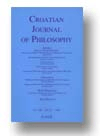
Croatian Journal of Philosophy
Exploring Diverse Perspectives in PhilosophyCroatian Journal of Philosophy is a distinguished academic platform dedicated to the advancement of philosophical discourse, published by KRUZAK D O O. With an ISSN of 1333-1108 and an E-ISSN of 1847-6139, this journal has been a key player in the field since its inception in 2008, continuing to progress through its converged years until 2024. Recognized for its scholarly contributions, it holds a prestigious placement in Q3 within the philosophy category for 2023 and ranks #571 out of 806 in Scopus, reflecting its engagement with a broad spectrum of scholarly discussions and ideas. Though it operates without an Open Access model, the journal remains a vital resource for researchers, professionals, and students who are keen to explore contemporary and traditional philosophical issues from diverse perspectives. The journal's commitment to expanding the boundaries of philosophical inquiry emphasizes the significance of interdisciplinary dialogue, making it a reputable choice for those seeking to deepen their understanding of philosophical thought.